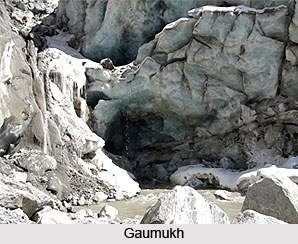 Gaumukh is the source of the Bhagirathi River. It is the name given to what looks like a cow`s snout, a cave which is formed by the junction of fifteen glaciers which has the appearance of the mouth of a cow, thus the name Gaumukh. Gaumukh literally means the mouth of a cow, Gau means cow and Mukh means mouth. Gaumukh lies situated at a height of almost 11, 500 feet. It is one of the largest in the Himalayas with an estimated volume of over 27 cubic metres.
Gaumukh is the source of the Bhagirathi River. It is the name given to what looks like a cow`s snout, a cave which is formed by the junction of fifteen glaciers which has the appearance of the mouth of a cow, thus the name Gaumukh. Gaumukh literally means the mouth of a cow, Gau means cow and Mukh means mouth. Gaumukh lies situated at a height of almost 11, 500 feet. It is one of the largest in the Himalayas with an estimated volume of over 27 cubic metres.
Legend of Gaumukh
Gaumukh even finds mention in the ancient Indian Puranas. The story goes such that a shepherd boy while looking for his lost sheep came upon this place which looked like a cow`s snout and that is how the place got its name.
Gaumukh lies around 18 kms from Gangotri. The Bhagirathi River flows rather rapidly at this point. Around the Gaumukh, nature is quite wild. There are boulders scattered here and there with some pieces of broken snow. Along with this is the hard clayey snow of the Gangotri glacier. The terrain from Gangotri to Gaumukh is difficult but since it is one of the most important of pilgrimage in India it is visited by many pilgrims, yogis and Sanyasis. The natural scenery of the place is magnificent and those who visit it in a spirit of religious dedication speak of being and those visit it in a spirit of religious dedication speak of being spiritually elevated.
It is appoint to note that the Gaumukh, the actual portion which looks like a snout, is moving backwards quite rapidly.
This article is a stub. You can enrich by adding more information to it. Send your Write Up to content@indianetzone.com



















